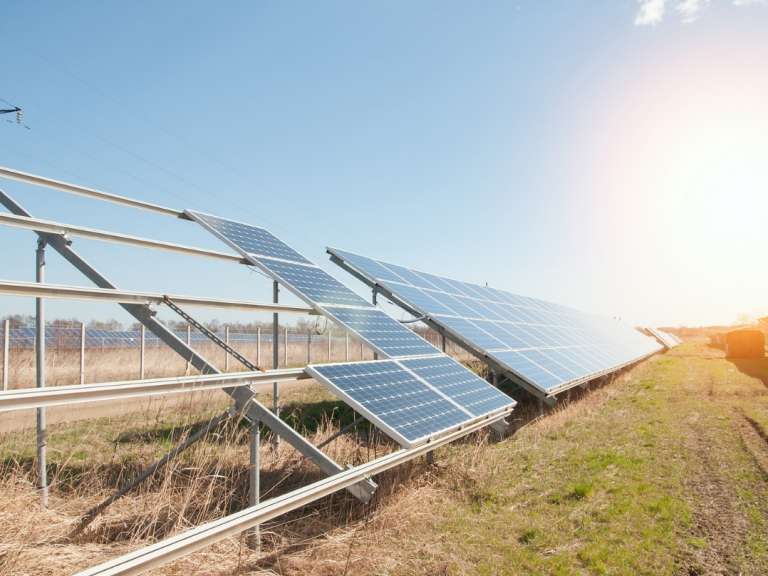The Latin American power sector is poised for growth in 2018, but economic openness is a challenge for countries aiming to grow their energy industries over the long term.
Mauricio Macri, the president of Argentina, appears to be facing this issue head-on, pursing a strategy of economic openness to rebuild the energy industry in his country after more than a decade of flagging production.
Foreign Investment
"We have to be predictable and reliable," Macri said on October 31. "The task of governments must be to promote and accompany the efforts of the private sector, reorient investments, help eliminate obstacles, and generate positive and favorable conditions to improve the competitiveness of companies and industries."
The efforts of his two-year-old administration are paying off. Companies have committed $149 billion so far to develop oil and natural gas resources in Vaca Muerta, one of the world's largest shale plays. A tender in November snared record-low prices of $47.64/MWh for installing wind power capacity and $48.67/MWh for solar. The goal is to meet 20 percent of energy demand from renewable sources by 2025, according to the Energy Ministry.
More investment is expected. Germán Chullmir, CEO of Orel Energy, a US-based energy investment company, said he expects new foreign firms to enter Argentina in 2018, in particular in the oil and renewable power sectors.
"Argentina is going to be a destination market," he said at the November 29 LatinFinance Argentina Sub-Sovereign and Infrastructure Finance Summit in Buenos Aires.
Room for Growth
With the third-biggest economy in Latin America, Argentina is a standout, because its resources went largely undeveloped under the 2003–15 government, when capital controls, price caps, and regulatory uncertainty curbed profit potential and made it hard to plan business.
This has left plenty of room for growth, and if the Macri government can rein in the 23 percent inflation rate to a target in the single digits by 2019, the pace of investment "is going to be faster than what we have seen up until now," Chullmir said at the summit.
Elsewhere in the region, politics could prove a challenge for bringing in investment.
"The keys for success are being open to foreign investment and having stable rules and reasonable transparency and openness, and not trying to overprotect domestic stakeholders," Claudio Loser, CEO of Centennial Group Latin America, a Washington, DC-based policy and strategic advisory, tells Transform. "It is nothing magic."
Loser says the countries doing well in terms of economic openness, other than Argentina, are Chile, Colombia, and Peru.
Betting on Renewables
Chile is perhaps the most stable economy in the region, attracting enough investment to become one of the world's 10 leading producers of clean energy, according to the International Renewable Energy Agency. There is even more potential, such as in geothermal emissions. Chile wants to get 90 percent of electricity from renewable sources by 2050, up from 17 percent in 2017, Energy Minister Andrés Rebolledo told CNN en Español in June.
Uruguay's stable conditions for doing business have helped diversify a once hydropower-reliant energy sector with wind and solar power. Over the past 15 years, Uruguay has gone from frequent shortages to producing a surplus that has allowed it to increase sales to Argentina and Brazil. Its exports grew to 1.5 GWh in the first 11 months of 2017 from 779,077 MWh in 2016, according to the Administration of the Electricity Market, the wholesale power market operator.
Brazil, the largest economy in Latin America, is poised for a recovery in energy investment, as its economy rebounds from a two-year slump and a sluggish 2017 with a projected 1.5 percent growth in 2018, according to the latest outlook of the International Monetary Fund. This is in line with the rest of South America.
Mexico, the second-biggest economy in Latin America, should grow slightly faster at 1.9 percent in 2018, the forecast shows. Its energy prospects are improving, as well. Mexico reformed its energy market in 2014, and the first major oil discovery came in July 2017 thanks to private investment flowing into the country. The find was made by a group led by Houston-based Talos Energy.
Political Challenges
A challenge for the energy industry could come from presidential elections in Brazil, Colombia, and Mexico in 2018. A frontrunner in Mexico, for example, is Andrés Manuel López Obrador, an opponent of the 2014 energy reform.
Another standout for its energy growth potential is Guyana, where large offshore oil finds have been made over the past few years. According to Loser, Guyana has become "very open" to attracting energy investment. The government asked for insight from Norway on how to develop its oil resources and the economy, aiming to avoid the pitfalls of corruption and mismanagement.
The trouble spot in the region is Venezuela, where oil production has stalled because of an economic crisis and US sanctions against the government there for corruption, human rights abuses, and persecution of the political opposition. This has limited the nation's huge energy potential, as well as access for foreign companies to do business there.
Latin America has enormous resource potential, from oil to gas and renewable energies. The challenge is to put these riches into production. For that to happen, governments must make it easy to do business in the region, so foreign investors will come in for the long haul.
